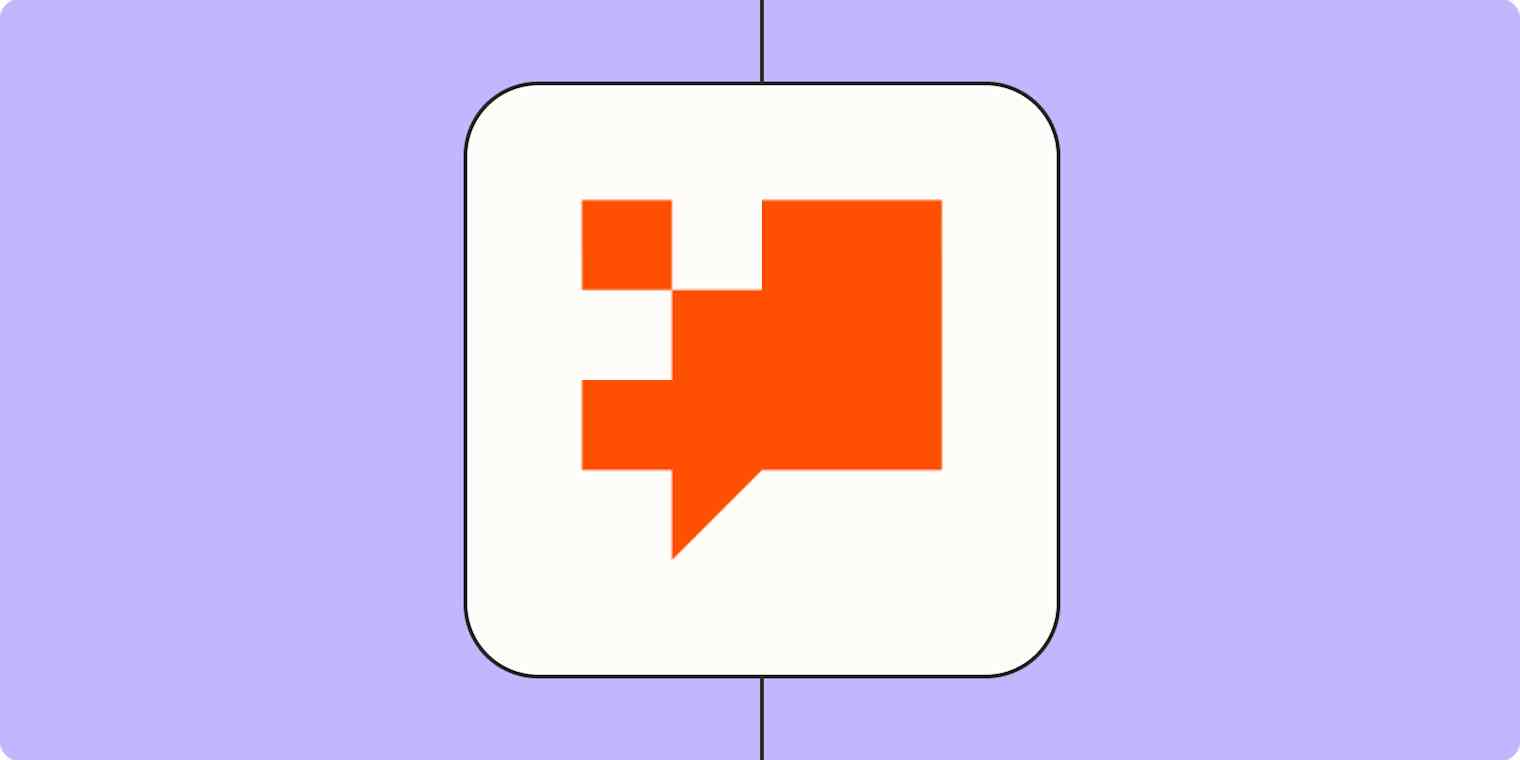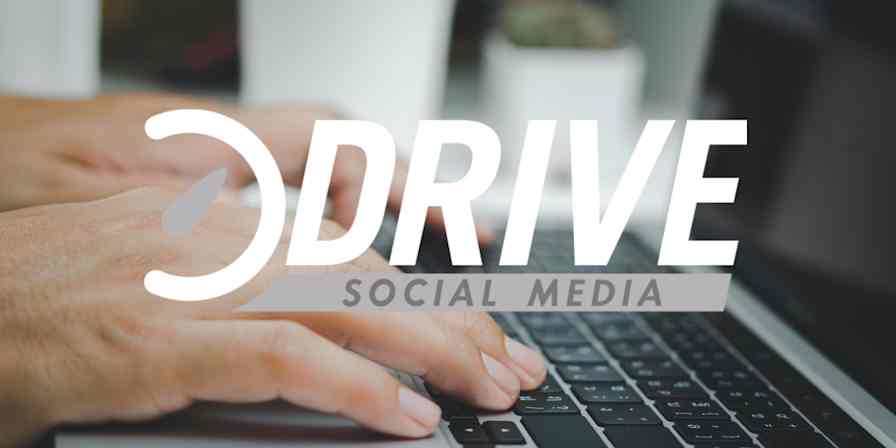Back in the early 2000s, I spent countless hours chatting with SmarterChild, an AIM chatbot that I tormented with the most unhinged questions my teenage brain could conjure.
Little did I know that while I was treating SmarterChild like both my personal therapy bot and verbal punching bag, I was actually interacting with a marketing chatbot without even realizing it—a primitive bot that was simultaneously collecting data, building brand awareness, and giving us a taste of what conversational AI could become.
Two decades later, the same basic principles—automated conversation, instant responses, and the uncanny valley feeling of talking to something almost human but not quite—have evolved into sophisticated chatbot marketing tools that are changing how businesses connect with customers.
SmarterChild walked so that today's chatbot marketing could run. And if you're curious about how chatbots can fit into your marketing strategy, you're in the right place.
Table of contents:
What is chatbot marketing?
Chatbot marketing is a digital marketing strategy that uses automated chat interfaces (chatbots) to interact with potential and existing customers for marketing purposes.
The purpose of marketing chatbots isn't to make customers feel less alone on your website. They're designed to streamline marketing processes by providing immediate answers to common questions, guiding users to relevant information, capturing lead details, qualifying prospects, and personalizing interactions at a scale humans simply can't manage alone.
Rule-based vs. AI chatbots
There are two main types of chatbots, just like there are two main types of pets: ones that do what you tell them and ones that think they know better.
Rule-based chatbots follow pre-determined paths using decision trees. You map out exactly how the conversation should go based on specific keywords or selections from predefined lists. These bots are great for straightforward tasks like answering simple questions and handling linear conversations where nothing unexpected happens, just like every phone call I've ever had with my grandma.
AI-powered chatbots, on the other hand, leverage artificial intelligence (AI) technologies like natural language processing (NLP) and machine learning to understand and process human language in a more innovative way. This means they can:
Understand natural language: Instead of strictly following predefined rules, they try to understand the intent behind what someone types, even if they use slang, make typos, or communicate through a series of emojis that would confuse anyone over 30.
Handle complex conversations: AI bots aren't strictly bound by predefined scripts. They can manage more fluid, non-linear conversations, remembering context from earlier in the chat.
Learn and improve: Over time, AI chatbots can learn from interactions, getting better at understanding user needs and providing accurate responses (unlike my cousin Derek, who's been making the same mistakes since 2002).
Integrate and act: Modern AI chatbots aren't isolated. They can connect to other business systems, like your CRM, knowledge base, or product databases, to fetch information or trigger actions, making them incredibly powerful tools for marketing automation.
Benefits of chatbots for marketing
Why should you bother with marketing chatbots instead of just spamming your email list into oblivion? Here's why:
24/7 availability: Unlike human employees who have the audacity to need things like "sleep" and "weekends" and "legally mandated breaks," chatbots are always on, ready to engage visitors, answer questions, and capture leads, regardless of the time or day of the week.
Scalable personalization: While one-to-one human interaction is invaluable, it doesn't scale. Chatbots can handle multiple conversations simultaneously, and when integrated with your CRM or other data sources, they can personalize these interactions based on user history, behavior, or demographics.
Improved user experience (UX) and SEO: By offering immediate assistance and relevant suggestions, chatbots can lead to positive SEO signals like longer session durations and lower bounce rates. Google's algorithm smiles favorably upon websites that keep visitors engaged, even if that engagement consists of screaming obscenities at a chat window that keeps asking, "Did that answer your question?" when it clearly didn't.
Engagement and lead capture at scale: Instead of passive lead forms, chatbots proactively engage website visitors or social media users, asking qualifying questions and capturing contact information. This often results in higher engagement rates and, ideally, leads who aren't completely unqualified randos.
Automated lead qualification: AI marketing bots can ask the awkward qualifying questions upfront, segmenting leads automatically. This saves sales teams from wasting time on people who have no intention of making a purchase.
Enhanced data collection and customer insights: Conversation data provides insights into customer needs and pain points, frequently asked questions, product interests, and gaps in your content or support resources. This feedback loop is invaluable for refining your marketing messages.
Chatbot marketing use cases and examples
Let's go over some real-world scenarios where chatbot marketing earns its keep, especially when connected to your other core tools to build automated marketing workflows.
Website lead qualification
One of the most popular uses for chatbots is engaging website visitors before they get bored and wander off. When someone lands on your website, a chatbot can pop up and say hello, offer help, and ask qualifying questions.
For example, a marketing agency's chatbot might ask visitors about their business size, marketing goals, and budget. Based on the answers, the chatbot can determine if they're a good fit and worth passing to the sales team. And because it's conversational, people are more likely to share information than they would on a static form.
Once the chatbot captures a lead, it can:
Automatically add the contact and conversation details to your CRM.
Trigger a personalized welcome email sequence in your email marketing platform.
Send an instant notification to the relevant sales rep in your team chat app with the lead details and chat transcript.
Learn more about automating lead management with Zapier, or take a look at these examples of how you might connect Zapier Chatbots to the rest of your tech stack.
More details
More details
Content promotion
Remember when finding information on a website involved reading? Now your chatbot can use context to suggest relevant blog posts, case studies, eBooks, or videos from your knowledge base or content library.
When someone asks a question about, say, remote work challenges, the chatbot can provide a quick answer and then suggest, "By the way, we also have a great webinar recording on mastering the art of working in sweats forever. Would you like to see it?" This feels helpful rather than pushy, which is the marketing sweet spot—like offering someone a tissue when they sneeze instead of trying to sell them a handkerchief subscription.
Once the chatbot has successfully diverted attention to your content, it can:
Add users to a specific segment in your email tool based on the content they requested.
Log the content interaction in their CRM profile.
Learn how to automate your content promotion with Zapier, or get started with one of these pre-made automated workflows.
More details
More details
eCommerce product recommendations and support
You know that feeling when you walk into a store and a sales associate immediately descends on you like a vulture on roadkill, and you say you're just browsing even though you actually do need help, but now you're committed to the lie? eCommerce chatbots eliminate that whole awkward exchange by just being there when you need them, without the commission-hungry eyes.
By integrating with your product database or knowledge base, these chatbots can provide detailed information about products, availability, and shipping times. They can also:
Create orders in your eCommerce platform based on chat conversations.
Track common questions to identify product issues or confusing website elements.
Create a support ticket in your help desk system if it can't resolve a complex issue.
Learn how to automate eCommerce, or use one of these example workflows to get started.
More details
More details
Feedback collection and surveys
You know what's worse than those customer satisfaction surveys that pop up every time you buy something online? Nothing. Nothing is worse.
But businesses need feedback to improve, and bots make the process significantly less awful. A smart chatbot will pick the right moment to ask for feedback in a conversational way. And because you're already there and the interaction is still fresh, you're way more likely to answer than you would be three days later when you get a "please rate your experience" email.
Once the chatbot captures feedback, it can automatically:
Log the comment and feedback score in a spreadsheet, Airtable base, or dedicated feedback tool.
Trigger a follow-up task based on the sentiment in a project management tool.
Learn more about feedback automation with Zapier, or check out these examples to get a feel for how you might connect Zapier Chatbots to the other apps you use.
More details
More details
Event registration and reminders
Events—webinars, workshops, product launches—are powerful marketing tools, but the logistics can be a nightmare. Chatbots for event marketing are convenient for attendees and effective for marketers looking to boost attendance.
When someone shows interest in an event, a bot can answer questions about the agenda, speakers, or schedule, handle registration directly within the chat interface, and schedule reminders so your attendees don't end up panic-joining a Zoom call while trying to find a shirt that doesn't look like they've been using it as a napkin for the past week.
After confirming registration details, the chatbot can automatically:
Add the registrant directly to your webinar platform or event management tool.
Add the registrant to a dedicated email list in your email marketing platform for event-specific communications.
Schedule automated reminder messages to be sent via email or SMS leading up to the event.
Learn how to automate your event management.
Zapier is the most connected AI orchestration platform—integrating with thousands of apps from partners like Google, Salesforce, and Microsoft. Use interfaces, data tables, and logic to build secure, automated, AI-powered systems for your business-critical workflows across your organization's technology stack. Learn more.
Tips for implementing a chatbot marketing strategy
Now that I've convinced you (or at least myself) that chatbots aren't just annoying pop-ups designed to simulate human connection while actually making you feel more alone than ever, let's talk about how to implement a chatbot strategy without completely alienating your customer base.
Define clear goals
Before building your chatbot, decide what specific marketing objective it will support. Will it increase sales? Improve conversion rates on key pages? Reduce customer support inquiries?
Have a specific, measurable goal. "Increase engagement" is too vague—that's like saying your fitness goal is to "be healthier." Instead, aim for something concrete, like "Increase the number of qualified leads by 20%" or "Reduce the volume of basic support questions by 30% to free up the support team for more complex issues."
Having clear goals does three important things:
It guides your chatbot's design, content, and integration choices.
It provides metrics to measure success (or failure, but we're staying positive here).
It helps justify the investment when your CFO inevitably asks, "Why are we paying for a robot to chat with people?"
Without defined goals, your chatbot is just a shiny toy—fun to play with initially, but likely to be abandoned when the novelty wears off, like the rapid egg cooker gathering dust in my kitchen cabinet.
Select the right chatbot builder
Once you know your goals, it's time to choose a chatbot builder. The market is flooded with options, from simple rule-based tools to sophisticated AI platforms. Consider factors like:
Ease of use: Do you need a low-code/no-code solution that marketers can manage, or do you have actual developers who can do the scary coding stuff? (If it's the former, hi, same.)
Integration needs: Can it easily connect with your existing CRM, email marketing, help desk, and other essential tools, so it isn't operating in its own lonely silo?
AI capabilities: Do you need basic rule-based flows, or advanced NLP for understanding natural language and handling complex conversations?
Channels: Where do you need the chatbot to live? Website, Messenger, WhatsApp, Slack, SMS? Ensure the builder supports wherever you plan to deploy it.
Customization: Can you tailor the bot's appearance and conversation logic to match your brand and specific use cases?
Scalability: Will it grow with your business, or will you need to start over when you expand?
The fanciest chatbot with the most advanced AI isn't necessarily the best choice. A really well-built rule-based bot often outperforms a half-baked AI one. If your goal is speed, clarity, and conversions (which it usually is in marketing), simplicity often wins.
Design conversations, not just scripts
A common mistake is treating chatbot interactions like FAQ pages with a different interface. Effective chatbots engage in conversations that anticipate user needs and guide them toward solutions without sounding like a kidnapper reading demands.
Consider the difference between these two approaches:
Bad chatbot: Hello. How may I assist you today? User: Do you have this shirt in blue? Bad chatbot: Please select from the following options: Product information, Order status, Returns, Other User: closes website forever |
Good chatbot: Hey there! Need help finding something specific today? User: Do you have this shirt in blue? Good chatbot: Let me check that for you! Good chatbot: The vintage tee you're looking at comes in navy blue and is in stock in all sizes except XL. Want me to show you how it looks in blue? User: adds to cart and buys three more things they don't need |
See the difference? The good chatbot feels like texting with a friend who happens to work at the store, while the bad one feels like trying to talk to an automated phone system that doesn't understand your accent. (As someone who has screamed "REPRESENTATIVE" into my phone more times than I care to admit, I have strong feelings about this.)
When designing your chatbot conversations:
Think about user flow and how one question might lead to another.
Keep it natural—or at least as natural as a conversation with a disembodied corporate entity can be.
Use clear, concise language that gets to the point without overwhelming the user with walls of text.
Keep the tone consistent with your brand voice—whether that's professional, friendly, irreverent, or somewhere in between.
Start conversations with open-ended questions that invite engagement.
Remember that conversations are two-way exchanges. Your chatbot should ask questions, provide information, and respond appropriately to user inputs.
Integrate seamlessly
A chatbot that doesn't connect to your other business tools is like having a receptionist who takes messages but never gives them to anyone.
For maximum effectiveness, your chatbot should connect to basically anything that helps you manage customer relationships, so it can:
Pull customer information from your CRM to personalize conversations.
Update lead status based on chat interactions.
Trigger email follow-ups based on conversation outcomes.
Create support tickets in your help desk platform.
Check inventory or order status in your eCommerce system.
Schedule meetings in your calendar app.
A well-integrated chatbot acts as a central hub, automating workflows across your entire marketing stack. Otherwise, you're creating a bizarro parallel universe where your chatbot knows things about your customers that the rest of your business doesn't, which is both inefficient and weird.
Personalize when possible
People like to feel special, even when they know they're talking to a machine. Using known data to make interactions more relevant can significantly improve engagement and conversion rates.
Your chatbot can tailor conversations by:
Using the visitor's name in the conversation
Referencing past purchases or interactions
Acknowledging their company or industry
Tailoring recommendations based on their behavior or profile
A personalized greeting like "Welcome back, Jiminy! How's that project management software working out for you?" feels significantly less alienating than a generic "Hello, how can I help you?"
Personalization should enhance the user experience, not make people wonder if they should check for hidden cameras in their office. "I notice you've been looking at our pricing page for 7 minutes and 32 seconds" is not the way to win friends and influence people.
Always provide an escape hatch
We've all been trapped in conversations with actual humans that we desperately want to escape. But at least with humans, you can fake a phone call or pretend you just remembered an urgent appointment with literally anyone else.
A chatbot without a clear way to end the conversation or talk to a real person is like a horror movie where there's no way out—entertaining for observers, perhaps, but hellish for participants.
Always, always make sure your chatbot:
Clearly communicates how to reach a human agent at any point in the conversation
Recognizes when it's not being helpful and proactively offers to connect to a person
Provides alternative contact methods like email, phone, or a support ticket
Transfers conversation history to human agents so customers don't have to repeat themselves
Sure, the whole point of a chatbot is automation, but some questions are too complex, too nuanced, or too angry-customer-who-is-about-to-go-nuclear for even the best conversational AI. Know when to let the robots tap out and the humans tag in.
Test, iterate, and optimize
Before unleashing your chatbot on the unsuspecting public, test conversations before they go live so you don't accidentally program your bot to tell customers to "go away" instead of "have a nice day" (an easy typo; could happen to anyone).
Test it with actual humans who will use it the way real customers do (unpredictably and often while multitasking or slightly irritated). Have people try to break it, ask it weird questions, abandon conversations halfway through, and generally behave like the chaotic creatures humans are. Build in graceful fallback responses for when it doesn't know an answer ("I'm not sure about that, but here's where you can find help"), and make sure a human can jump in if necessary.
Then, once it's live, obsessively monitor the conversations. Look for:
Questions your chatbot couldn't answer
Where people get frustrated and abandon the chat
Conversations that started strong but somehow ended with the customer more confused than when they began
Successful interactions that led to sales or solved problems
Use this data to make your chatbot smarter over time. Add answers to common questions, fix broken conversation flows, and remove things that aren't working.
Marketing automation from conversation to conversion
Zapier Chatbots lets you build AI-powered chatbots that don't just talk—they take action. Train your chatbot by uploading documents or scraping specific webpages, customize how it looks and behaves, and connect it to thousands of other apps, turning dialogue into action across your entire business.
Here are some chatbot templates to get you started, or you can learn more about how to build your own marketing chatbot.
Increase lead engagement with a conversational chat experience embedded on your website.
Collect leads and answer questions with AI for your Ecommerce business.
Related reading:










